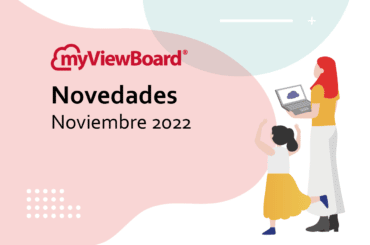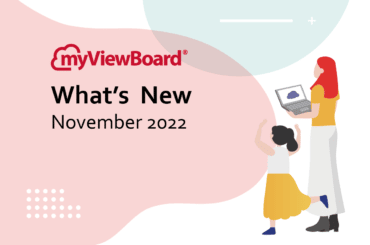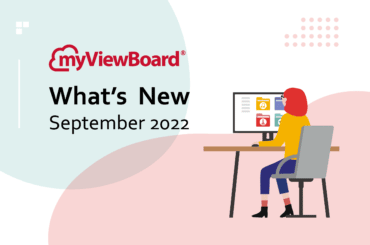This post is also available in: Español (Spanish) 繁體中文 (Chinese (Traditional)) Français (French)
For several decades, attempts have been made to boost student engagement with video-assisted learning activities. However, in the past, a video was often seen as more of a supplemental treat within classrooms, rather than a fundamental part of the learning experience. Nevertheless, thanks to modern internet speeds, video content availability, and the most up-to-date educational technology, attitudes have shifted.
Here, you will find more information about the value of video-assisted learning, and the ways it can be used to improve student engagement and learning outcomes.
To some extent, it could be argued that generating student engagement with video-assisted learning is nothing new. After all, many students from previous generations will have fond memories of a television being wheeled into their classroom, signifying that it was time to watch a video, and most teachers will have resorted to using videos for end-of-term lessons.
However, the extent to which video is now used in academic settings has shifted significantly in more recent years, as has the way video content is sourced and viewed. For instance, according to research from Kaltura, 70 percent of teachers now use video in the classroom multiple times per week. Often, this video will be streamed directly from the Internet.
So how can videos be used to improve student engagement and learning outcomes?
Dynamic Lessons
While some continue to buy into the myth that video learning is a passive learning experience, the reality is teachers can use interactive whiteboards and similar education technology to make lessons extremely dynamic, varied, and interactive. For example, educational videos can now be easily found, started, stopped, paused, and otherwise controlled. This means teachers can use short videos, or partial video clips, to introduce a new talking point within a lesson or use videos to ask key questions to the class.
Therefore, student engagement with video-assisted learning is not achieved by putting on long videos and leaving students to watch them. Instead, videos become a way of changing up a lesson at key points to keep students’ attention for longer. Educational videos can also be used to back up the points made by teachers, adding to their credibility.
Finding Content
Video-assisted learning does present some challenges to teachers and chief among these is finding content. In particular, teachers using platforms like YouTube to find videos need to contend with the fact that the platform is full of user-generated content, much of which will be poorly-researched, inappropriate, or feature advertisements, which can disrupt lessons.
The good news is, there are plenty of free educational video websites for teachers to use, with many specifically selecting videos that are appropriate for students of certain age groups. This makes it fairly easy for teachers to find the right video, for the right moment.
Furthermore, the rise of digital video within classroom settings has also helped teachers to find content that can help students with special educational needs. For example, videos with subtitles can be easily found, helping those with hearing difficulties, while audio descriptions may be available for students who have problems with their vision.
myViewBoard makes finding educational videos easy with myViewBoard Clips.

Repeat Viewings
Finally, one of the best qualities of video-assisted learning is the fact that students can return to content again and again. In many cases, videos are freely accessible online, either within the school or at home. This means that if students do find themselves struggling to concentrate in class, or unsure about a particular part of a video, they can re-watch it.
This can be invaluable for student engagement because one of the things that can cause students to become disengaged is a sense that the lesson has moved on without them. This may occur if a student becomes distracted when something important is explained, or if they miss an important lesson through a legitimate absence. The ability to access educational video content on-demand can go a long way towards rectifying some of these issues.
Final Thoughts
Modern Internet connections and improvements in digital technology have helped to make video a fundamental part of most learning environments and many teachers have been able to improve student engagement with video-assisted learning. In particular, the ability to liven up lessons, find suitable content easily, and make videos available for repeat viewing can play a crucial role in enabling students to achieve better outcomes.
We recommend myViewBoard Clips to streamline video-assisted learning. Or learn more about video-assisted learning here: Video-Assisted Learning: Worth a Million Words





1 Comment
Intercer par le tableau interactif afin d’une cominiication a distance